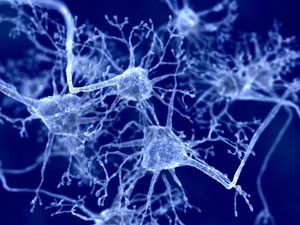 Whether students are studying in dental assistant classes, earning a pharmacy technician degree or getting ready for a medical coding program test, learning is the common denominator. And even though soaking up new information sounds like a basic task, the biochemical mechanisms underlying the process are much more complex. Recently, a team of international researchers revealed the signals that coordinate fast and slow changes in neuronal networks to keep the brain in balance while learning.1 How do networks in the brain work? Networks of neurons can be thought of as an archive cabinet where the brain stores and extracts information. Through sensory inputs – sound, smell, sight, texture, taste – the brain garners hundreds of pieces of information for any given experience. For a long time, scientists have puzzled over how the brain achieves sensitivity and stability to unexpected new experiences during learning, which seem like two contradictory requirements. A new model, created by the collaborative team of mathematicians and brain scientists from IKEN Brain Science Institute in Japan, UC San Francisco (UCSF), and Columbia University in New York, helped explained this balance. Here’s how they tackled the problem: The team looked at a classic experimental system. When a baby is born, the visual area of the brain’s cortex undergoes rapid modification to align with the properties of neurons when he or she sees the world through the left and right eye. This phenomenon is called ocular dominance plasticity (ODP), which was a discovery so monumental it was recognized by the 1981 Nobel Prize in Physiology or Medicine. Fast and slow: Two key parts in learning But despite the discovery, the ODP left a paradox that kept researchers wondering. It consists of two main parts: first, a fast-acting change in activity called Hebbian plasticity in which neural connections strengthen or weaken almost immediately depending on the frequency of their use. It’s important to point out that acting alone, this process could lead to unstable activity. Second, the ODP contains something called homeostatic plasticity, which tunes the activity of the whole neural network in slower manner, sort of like a remote controlling the overall brightness of a TV screen without changing its images.1, 2 The international team of researchers modeled these two cornerstone parts together and were able to resolve the paradox of brain stability during learning. “It seemed important to explore the interactions between these two different types of plasticity to understand the computations performed by neurons in the visual area,” Dr. Michael P. Stryker, from USCF, said in the press release. Findings The theory indicated that the fast and slow processes work together during learning, but only after each has independently solidified its own role. The discovery marked the product of a six-year quest to solve the decades-old question and lay the framework to a broader understanding of how the brain learns and consolidates new experiences on dramatically different timescales. “The essential idea is that the fast and slow processes control separate biochemical factors,” Dr. Miller, of Columbia University’s Mortimer B. Zuckerman Mind Brain Behavior Institute, said in the press release. “Our model solves the ODP paradox and may explain in general terms how learning occurs in other areas of the brain,” said Dr. Toyoizumi. The researchers hope that building on the model will be able to unveil insights into new principles of brain capacities and diseases. 1Mathematical Model Shows How the Brain Remains Stable During Learning. (2014, October 20). Retrieved October 23, 2014, from http://www.newswise.com/articles/mathematical-model-shows-how-the-brain-remains-stable-during-learning 2Turrigiano, G., & Nelson, S. (2004, February 1). Homeostatic plasticity in the developing nervous system. Retrieved October 24, 2014, from http://www.nature.com/nrn/journal/v5/n2/full/nrn1327.html
Whether students are studying in dental assistant classes, earning a pharmacy technician degree or getting ready for a medical coding program test, learning is the common denominator. And even though soaking up new information sounds like a basic task, the biochemical mechanisms underlying the process are much more complex. Recently, a team of international researchers revealed the signals that coordinate fast and slow changes in neuronal networks to keep the brain in balance while learning.1 How do networks in the brain work? Networks of neurons can be thought of as an archive cabinet where the brain stores and extracts information. Through sensory inputs – sound, smell, sight, texture, taste – the brain garners hundreds of pieces of information for any given experience. For a long time, scientists have puzzled over how the brain achieves sensitivity and stability to unexpected new experiences during learning, which seem like two contradictory requirements. A new model, created by the collaborative team of mathematicians and brain scientists from IKEN Brain Science Institute in Japan, UC San Francisco (UCSF), and Columbia University in New York, helped explained this balance. Here’s how they tackled the problem: The team looked at a classic experimental system. When a baby is born, the visual area of the brain’s cortex undergoes rapid modification to align with the properties of neurons when he or she sees the world through the left and right eye. This phenomenon is called ocular dominance plasticity (ODP), which was a discovery so monumental it was recognized by the 1981 Nobel Prize in Physiology or Medicine. Fast and slow: Two key parts in learning But despite the discovery, the ODP left a paradox that kept researchers wondering. It consists of two main parts: first, a fast-acting change in activity called Hebbian plasticity in which neural connections strengthen or weaken almost immediately depending on the frequency of their use. It’s important to point out that acting alone, this process could lead to unstable activity. Second, the ODP contains something called homeostatic plasticity, which tunes the activity of the whole neural network in slower manner, sort of like a remote controlling the overall brightness of a TV screen without changing its images.1, 2 The international team of researchers modeled these two cornerstone parts together and were able to resolve the paradox of brain stability during learning. “It seemed important to explore the interactions between these two different types of plasticity to understand the computations performed by neurons in the visual area,” Dr. Michael P. Stryker, from USCF, said in the press release. Findings The theory indicated that the fast and slow processes work together during learning, but only after each has independently solidified its own role. The discovery marked the product of a six-year quest to solve the decades-old question and lay the framework to a broader understanding of how the brain learns and consolidates new experiences on dramatically different timescales. “The essential idea is that the fast and slow processes control separate biochemical factors,” Dr. Miller, of Columbia University’s Mortimer B. Zuckerman Mind Brain Behavior Institute, said in the press release. “Our model solves the ODP paradox and may explain in general terms how learning occurs in other areas of the brain,” said Dr. Toyoizumi. The researchers hope that building on the model will be able to unveil insights into new principles of brain capacities and diseases. 1Mathematical Model Shows How the Brain Remains Stable During Learning. (2014, October 20). Retrieved October 23, 2014, from http://www.newswise.com/articles/mathematical-model-shows-how-the-brain-remains-stable-during-learning 2Turrigiano, G., & Nelson, S. (2004, February 1). Homeostatic plasticity in the developing nervous system. Retrieved October 24, 2014, from http://www.nature.com/nrn/journal/v5/n2/full/nrn1327.html



